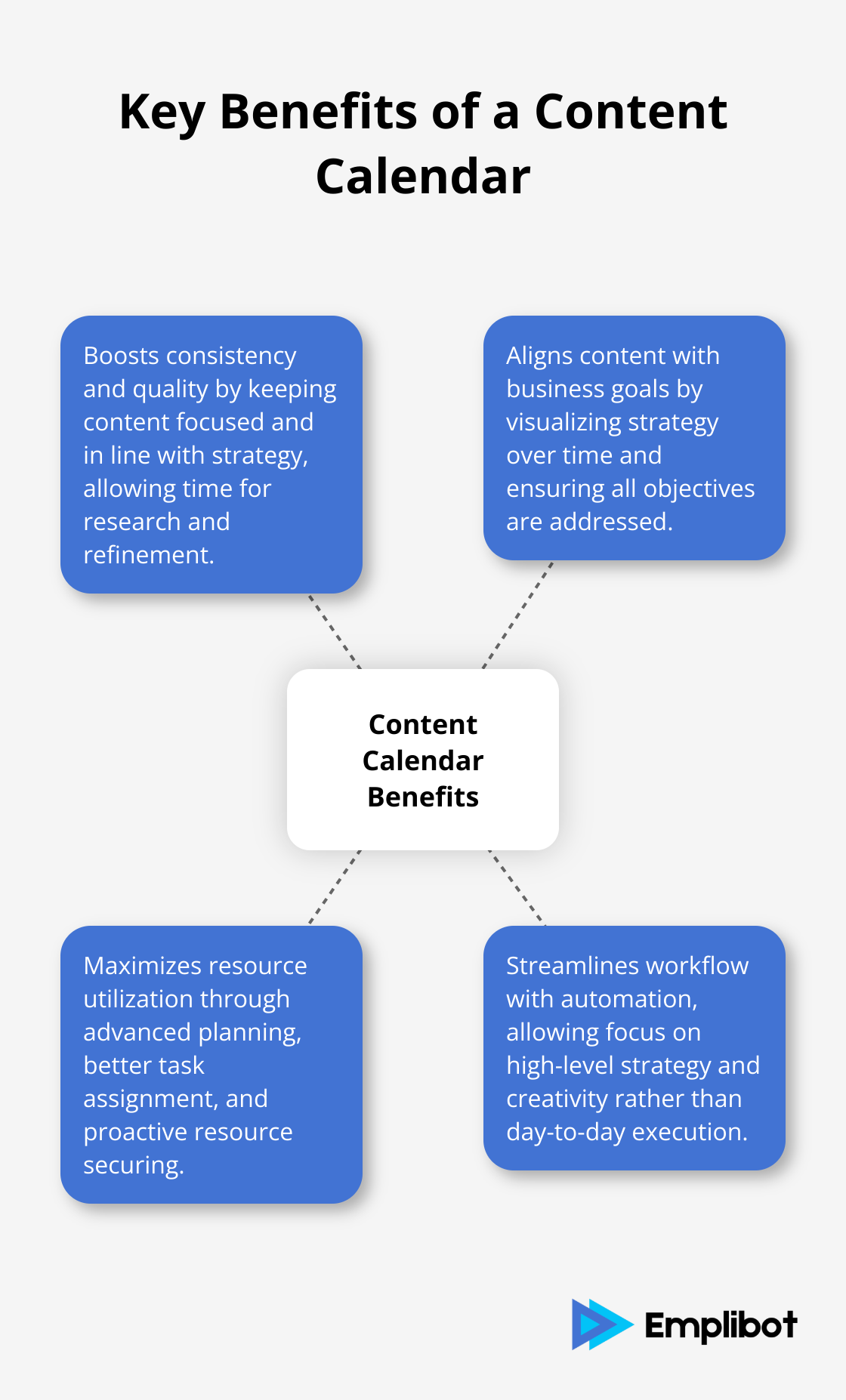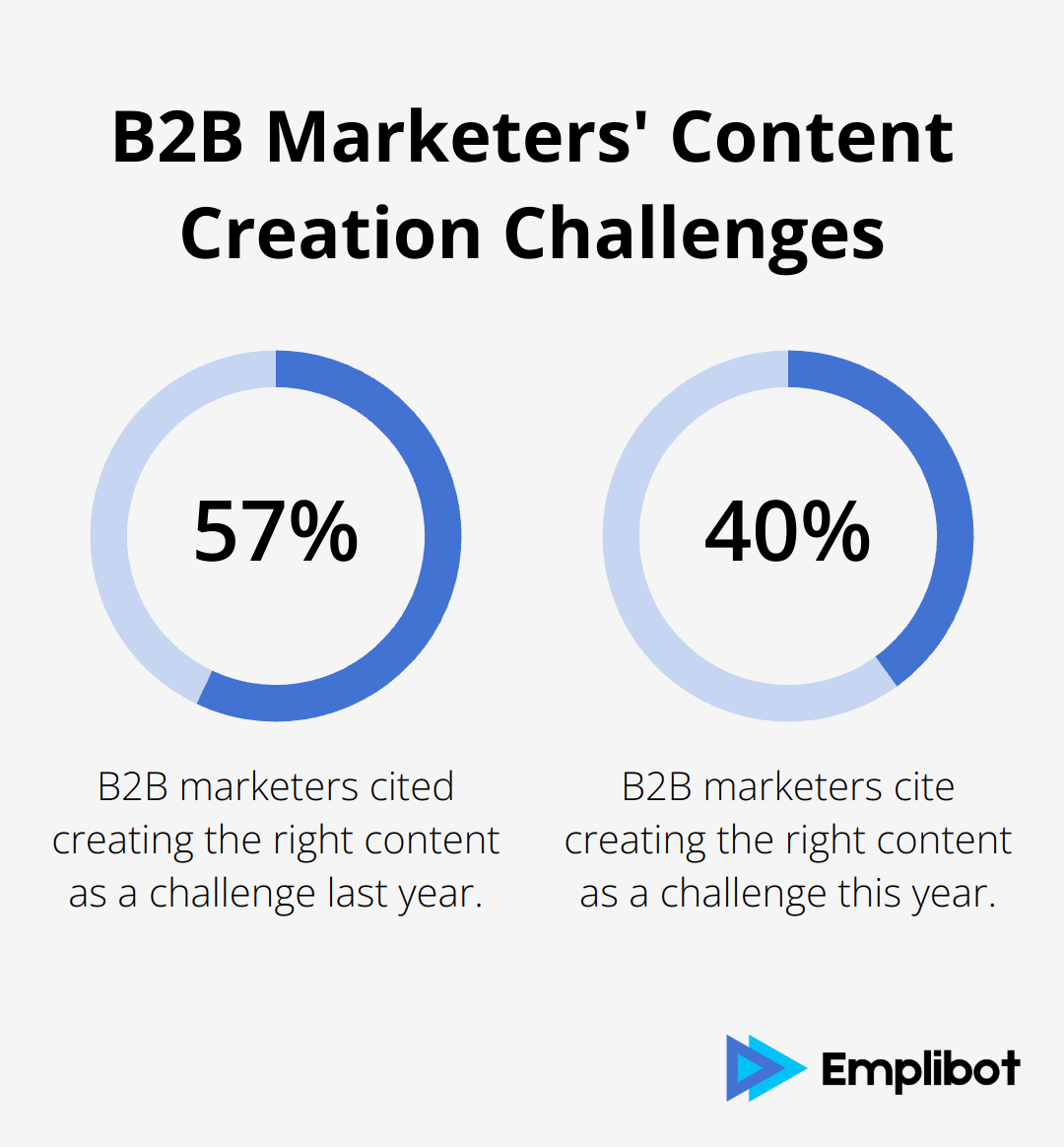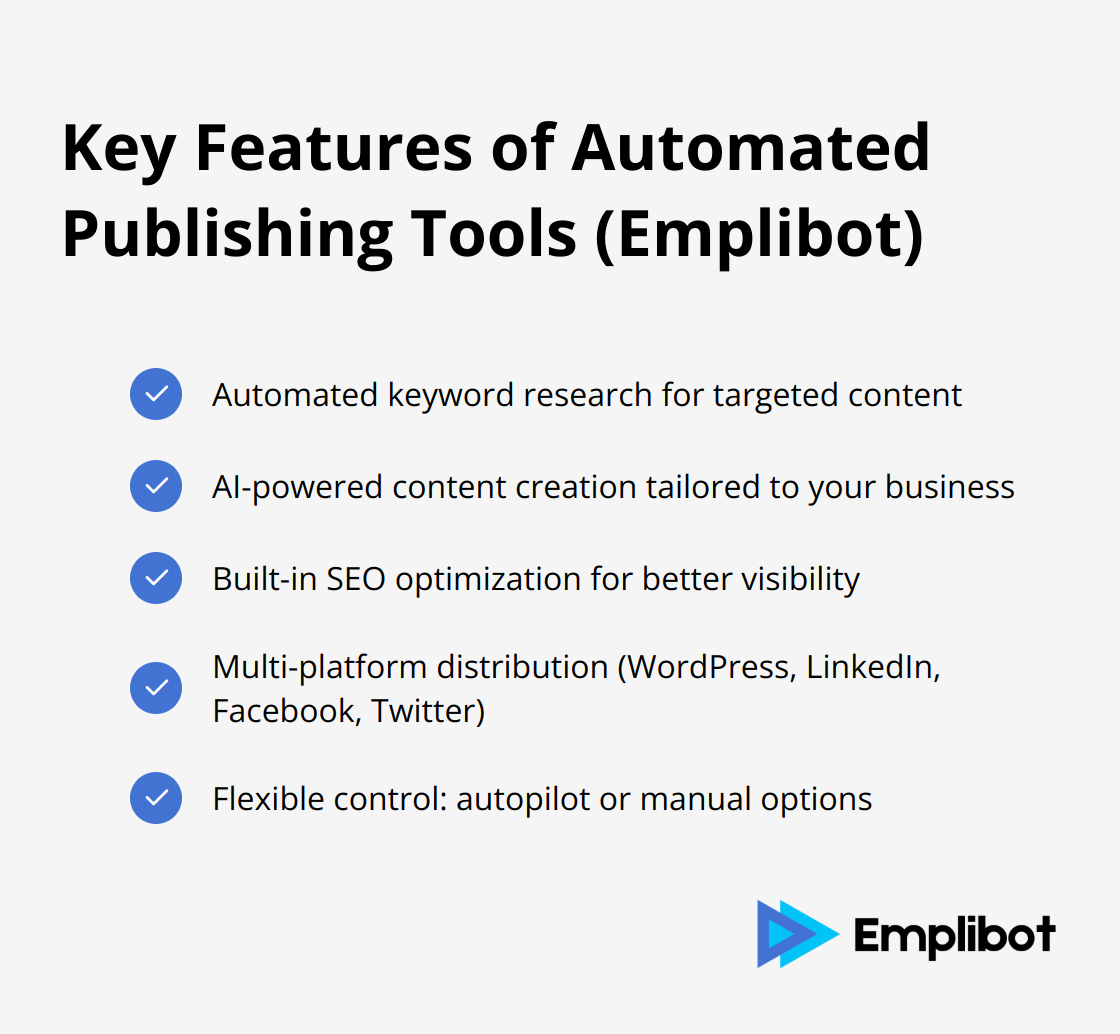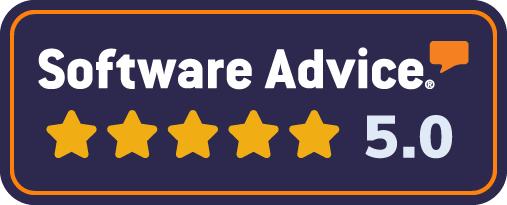Content calendars are the backbone of successful digital marketing strategies. They help businesses stay organized, consistent, and strategic in their content creation efforts.
At Emplibot, we’ve seen how a well-planned content calendar can transform a company’s online presence. But what happens when you combine this powerful tool with automated publishing?
This blog post will explore how to build an effective content calendar and harness the power of automation to streamline your content strategy.
Contents
ToggleWhy Is a Content Calendar Essential?
Boosting Consistency and Quality
A content calendar transforms your content marketing efforts. It keeps you focused and keeps your content in line with your overall strategy. A well-structured calendar helps you hit these targets consistently, keeping your audience engaged and your brand top-of-mind.
Quality matters as much as quantity. A content calendar allows you to plan ahead, giving you time to research, create, and refine your content. This results in posts that resonate with your audience and drive better results.
Aligning Content with Business Goals
Your content should always serve a purpose (e.g., driving sales, increasing brand awareness, or establishing thought leadership). Each piece should contribute to your overall business objectives.
A content calendar helps you visualize your strategy over time, ensuring you address all your goals. For example, if you plan a new product launch in Q3, your calendar can help you plan a series of posts leading up to the launch, building anticipation and educating your audience.
Maximizing Resource Utilization
Advanced planning allows for better resource allocation. You can identify gaps in your content schedule, assign tasks to team members, and secure necessary resources (like images or data) well before publication dates.
This proactive approach reduces last-minute scrambles and allows your team to work more efficiently.

Streamlining Workflow with Automation
Tools that automate content creation and publishing processes can further streamline your workflow. This automation allows your team to focus on high-level strategy and creativity, rather than getting bogged down in day-to-day execution.
With the right combination of planning and automation, you can create a powerful content machine that consistently delivers value to your audience while achieving your business goals. The next section will explore the key elements that make up an effective content calendar.
What Makes a Content Calendar Effective?
Diverse Content Types and Formats
A powerful content calendar incorporates a variety of content types and formats. Last year, 57% of B2B marketers cited creating the right content for the audience as a challenge, but this year, only 40% did. This mix might include blog posts, videos, infographics, podcasts, and social media updates.

You can plan a weekly blog post, bi-weekly video content, and daily social media updates. This diversity caters to different audience preferences and allows you to repurpose content across platforms (maximizing your efforts).
Strategic Publishing Frequency and Timing
The frequency and timing of your content publication significantly impact its performance. HubSpot’s research suggests that if your blog isn’t at least a year old, you should aim to publish 6-8 posts a month around a few important and promising topics.
However, quality trumps quantity. It’s preferable to publish fewer high-quality pieces than to produce subpar content to meet a quota. Your content calendar should reflect a publishing schedule that you can maintain consistently without compromising quality.
Audience-Centric Platform Selection
Your content calendar should align with your audience’s online habits. Pew Research Center reports that 69% of U.S. adults use Facebook, while 40% use Instagram. However, these numbers vary significantly based on demographics.
Tailor your content calendar to prioritize the platforms most relevant to your target audience. If you target professionals, LinkedIn might be your focus. For a younger demographic, TikTok or Instagram could be more appropriate.
SEO-Driven Topic Selection
Build your content calendar around topics that your audience actively searches for. Use keyword research tools to identify relevant keywords and topics in your industry.
Moz reports that pages with a featured snippet get a 2x higher click-through rate. Plan content around high-value keywords and structure it to potentially win featured snippets, which can significantly boost your organic traffic.
Your content calendar should remain flexible to accommodate trending topics or timely events while maintaining a consistent publishing schedule. These elements create a robust tool to drive your content marketing efforts forward. The next section will explore how to integrate automated publishing with your content calendar for maximum efficiency.
How Automated Publishing Revolutionizes Your Content Strategy
The Power of Automation in Content Publishing
Automated publishing transforms content marketing efforts. It eliminates manual posting, reduces errors, and saves time. This efficiency boost allows teams to focus on creating high-quality content rather than repetitive tasks.
Streamlining Your Workflow with Advanced Tools
Advanced automation tools handle the entire content creation process. They not only schedule and publish content but also generate it based on specific business needs. This end-to-end solution significantly reduces the time and resources required for content marketing.
For example, some tools automatically create a content calendar based on industry, target audience, and business goals. A good AI content calendar generator should help you organize your ideas, generate content quickly, track what’s performing, and stay on-brand. They then produce SEO-optimized content and publish it across multiple platforms (including WordPress blogs and social media channels like LinkedIn, Facebook, and Twitter).
Mastering Multi-Platform Content Distribution
Effective content marketing often requires presence across multiple platforms. Automated publishing tools make it easy to adapt and distribute content across various channels. Buffer remains one of the industry’s most user-friendly and effective social media scheduling tools. It allows you to customize content for each platform. Automation of the distribution process ensures your content reaches your audience wherever they are, without the need for manual cross-posting.
Maintaining Quality Control in Automated Systems
While automation offers numerous benefits, maintaining content quality remains paramount. Many automated systems address this by allowing for manual review and editing before publication. This feature ensures that the automated content aligns with your brand voice and meets your quality standards.
Automated systems also help maintain consistency in your content strategy. They ensure that your posting schedule remains steady, even during busy periods or holidays when manual posting might falter.
Emplibot: A Comprehensive Solution
Emplibot stands out as a top choice for businesses seeking a complete content marketing solution. It automates your WordPress blog and social media, handling everything from keyword research to content creation and SEO optimization. Emplibot produces high-quality, engaging content tailored to your business and distributes it across platforms like LinkedIn, Facebook, and Twitter. This tool offers the flexibility to run on autopilot or allow for manual control, making it suitable for businesses of all types.

Final Thoughts
A well-crafted content calendar structures your digital marketing strategy. It aligns your content with business goals, maintains a steady publishing schedule, and delivers high-quality material that resonates with your audience. Automated publishing tools integrate seamlessly with your content calendar to streamline workflows and save time.
These tools ensure consistent posting across multiple platforms, adapt content for different channels, and maintain quality control. They allow your team to focus on strategy and creativity rather than manual tasks. The future of content marketing combines strategic planning with cutting-edge automation.
We recommend exploring comprehensive solutions like Emplibot to elevate your content marketing efforts. This powerful tool automates your WordPress blog and social media, handling everything from keyword research to content creation and SEO optimization. It produces tailored, high-quality content and distributes it across platforms (including LinkedIn, Facebook, and Twitter).










